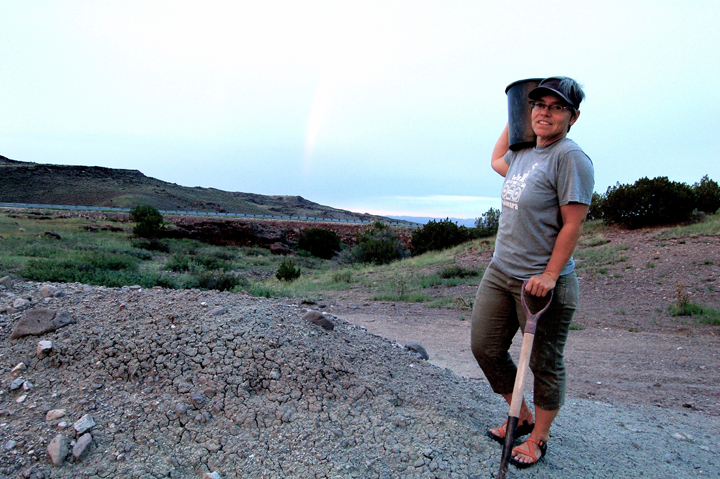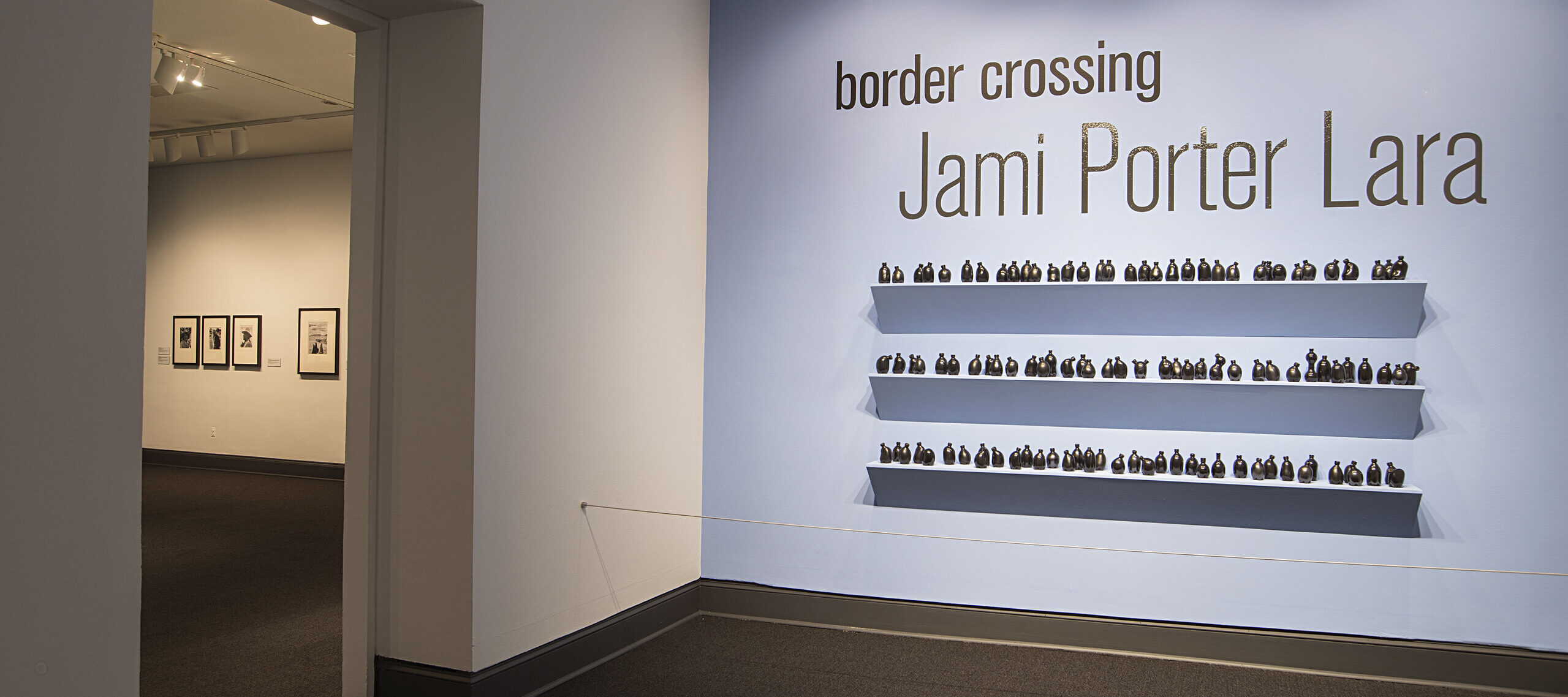Now on view at the National Museum of Women in the Arts, Border Crossing: Jami Porter Lara presents recent work by Albuquerque-based artist Jami Porter Lara (b. 1969), who hand-builds and pit-fires clay sculptures resembling a ubiquitous icon of modern life—the plastic bottle.

Porter Lara learned traditional techniques from potters in Mata Ortiz, in northern Mexico. She describes, “In the 1970s, there was a Pueblo pottery revival in Mata Ortiz. The people there started making ceramic pots that bore a lot of stylistic relation to ancient potsherds and artifacts found in that vicinity, from the Casas Grandes and Mimbres cultures. They locally sourced their materials and figured out how to make ceramic vessels in the same way as the people who preceded them.”
With a group of fellow art students, Porter Lara went to stay in Mata Ortiz to learn from potters Graciela and Hector Gallegos. “They showed us how to soak the clay and filter it and then let it dry. They also taught us how to build out of coils and how to burnish with a stone.” The forms and meaning of Porter Lara’s art are distinctly contemporary, but her materials and techniques connect her work to the Southwest and to people who preceded her in the region.
The Artist’s Process:
- She digs clay from an arroyo (stream bed) near her home.
- In a lengthy process, she mixes the clay with water and strains the excess moisture.
- To form the base of each vessel, she uses a plaster cast of the bottom of plastic bottles as a mold.
- To create the body of a vessel, she forms clay coils, stacking one coil on top of another, continually pinching them together and smoothing the surface.
- After it is dried, the pottery is burnished: Porter Lara rubs the surface with a smooth stone, using either coconut or olive oil as a lubricant.
- She fires the vessels in an outdoor pit, covered with a galvanized aluminum tub. During this “reduction” process, the pottery is kept away from flames and oxygen. Carbon released by sawdust and newspaper surrounding the work bonds with the clay and turns the vessels black.
Porter Lara’s works also engage with the industrialized mass production that characterizes modern consumer culture. While she recognizes the detrimental impact of this culture, Porter Lara states, “Saying that humans are only pollutants is a failure of imagination. Yes, we’re destructive, but we’re also creative. . . . I want to create the possibility that we can see things differently and contribute to the world. My work is my refusal to say that the earth would be better without me, and the determination to become equal to that claim.”
Visit the museum to see Border Crossing: Jami Porter Lara, on view through May 14. Learn more through the audio guide and meet Jami Porter Lara at the museum for a special Artists in Conversation program on April 6, 2017.
